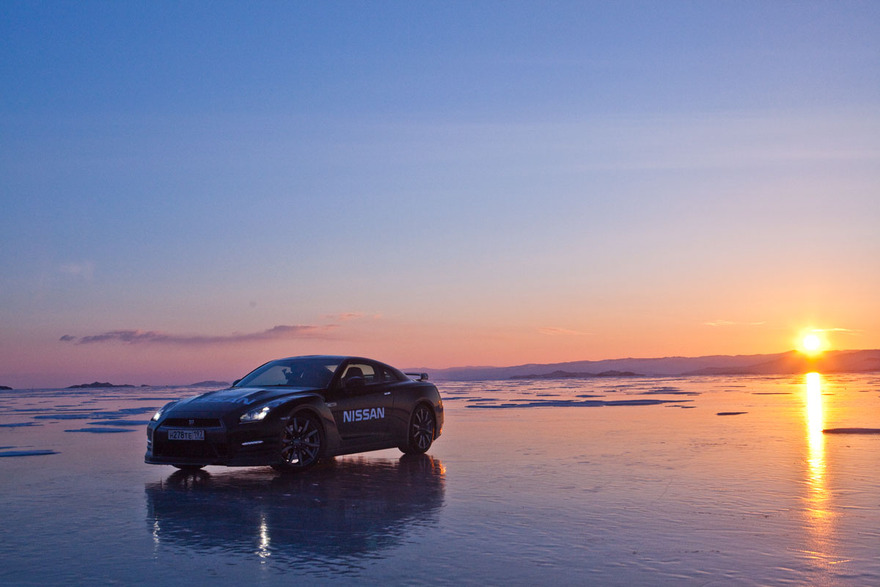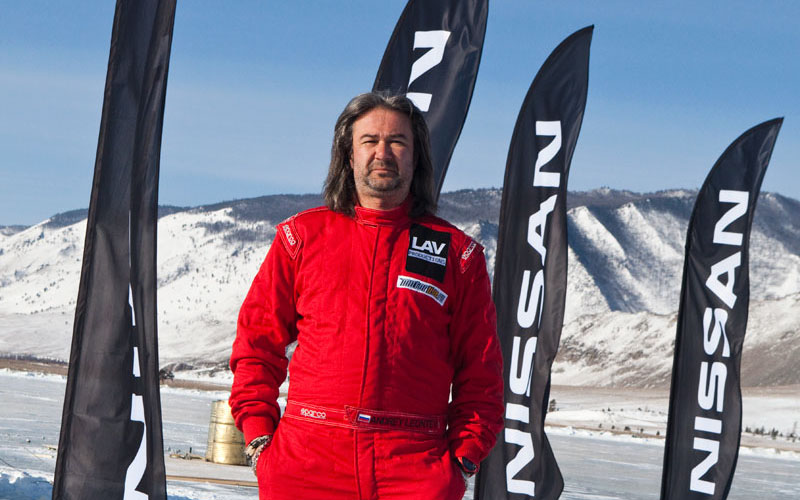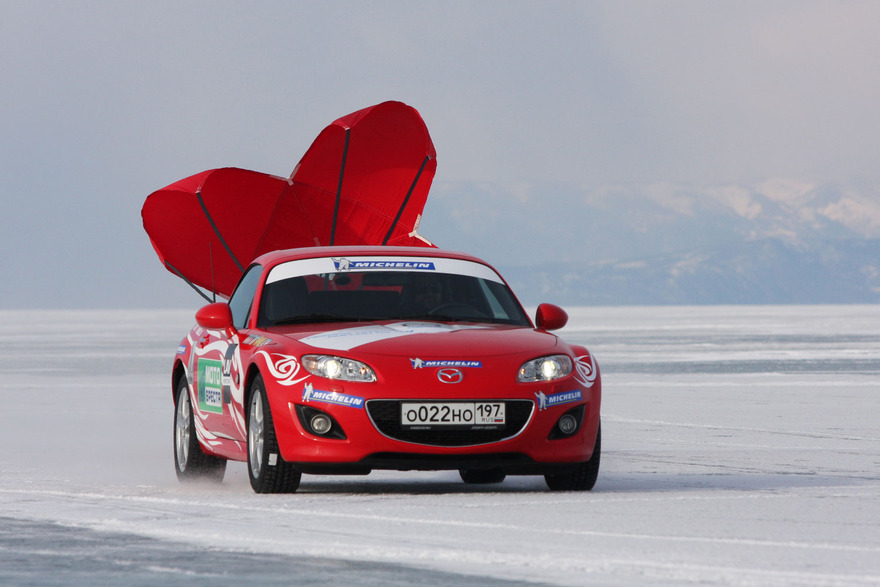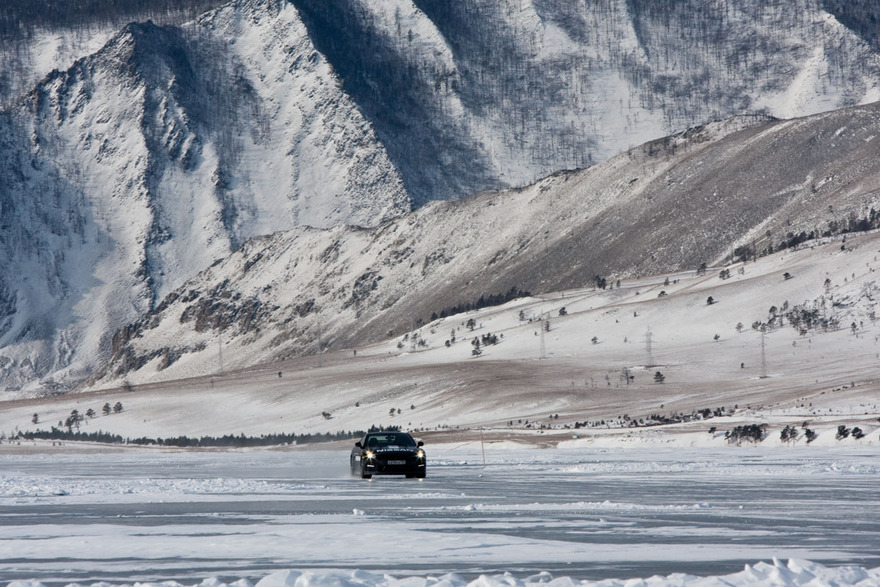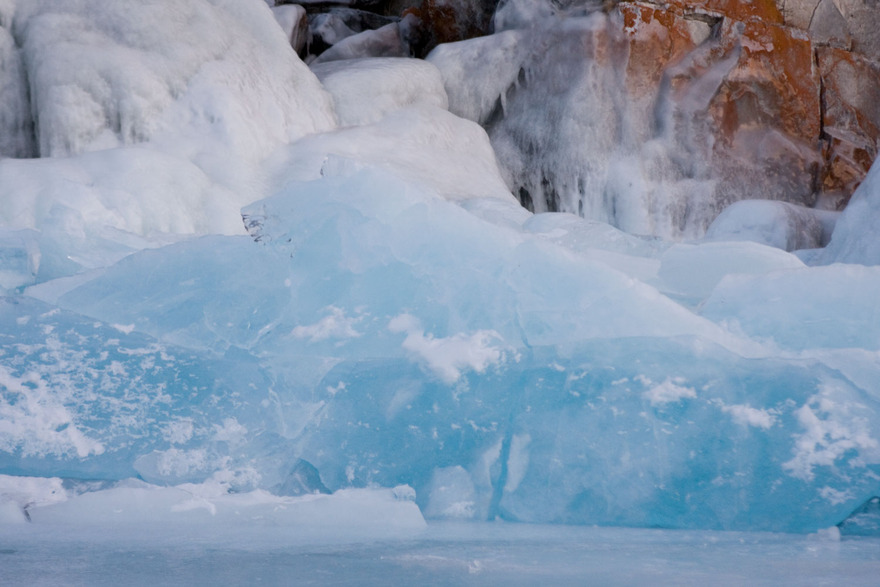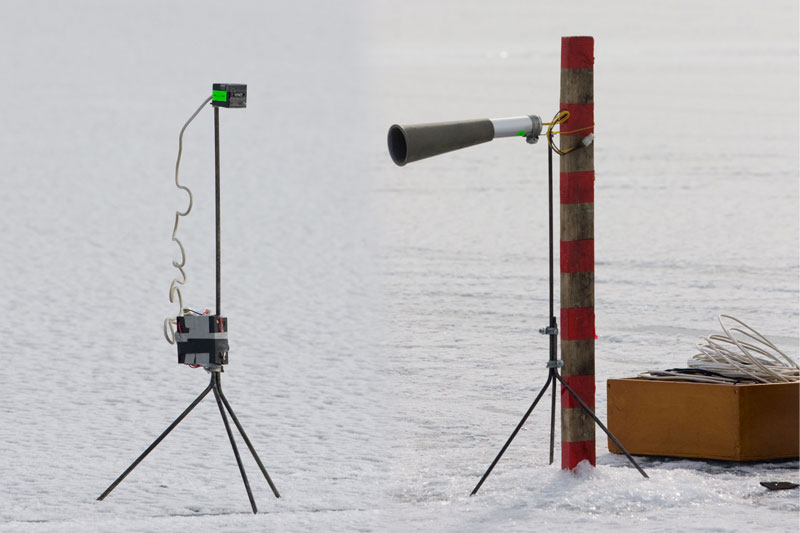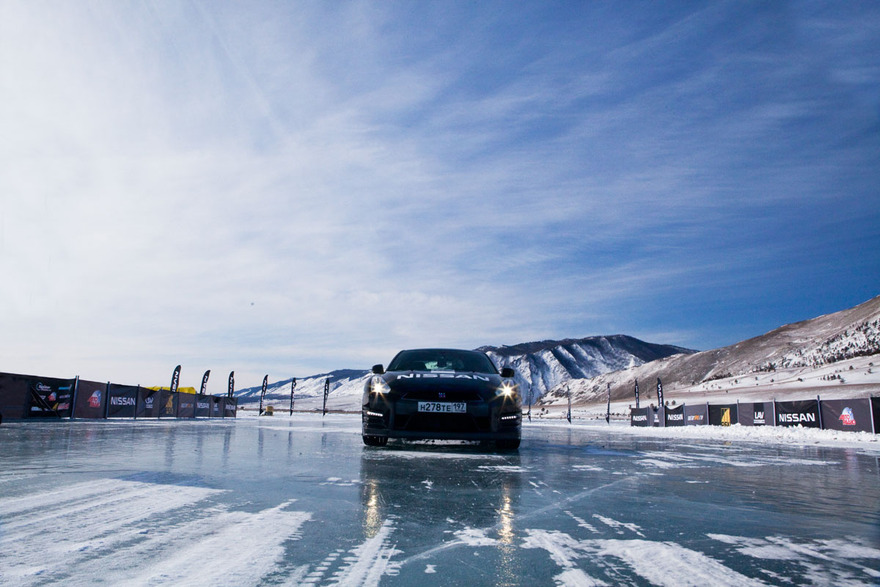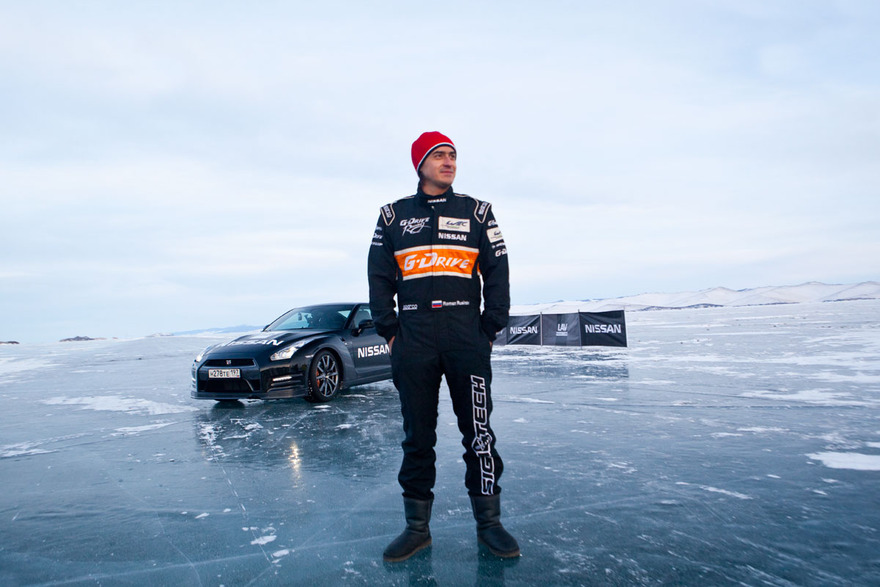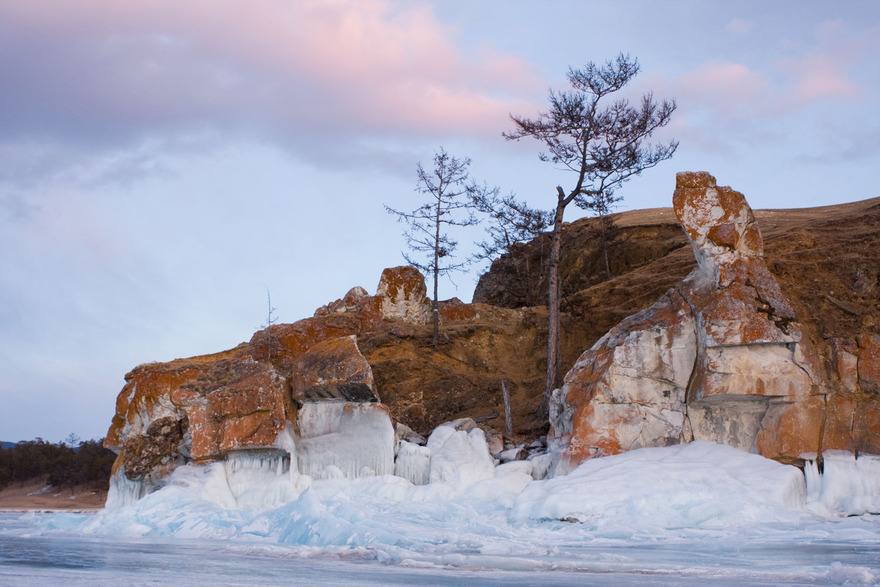Why? There are a few reasons: It’s beautiful. It’s unusual. It’s impressive.
And what is more important, for the third time a racing track will be created on the ice of Baikal lake, making it possible not only to test car performance and improve driving skills but also try setting a speed record!
1. Records in the USSR and Russia
Speed records have been one of the greatest sources of inspiration and adrenalin for people ever. Speed records were and are set on various possible surfaces: ground, asphalt, salt and even ice.
Unfortunately, setting speed records in Russia has not been very popular and first of all it’s due to poorly developed car industry and low level of motor sport in general.
Nevertheless, we should know about some of the events held even in our country.
It all began before the revolution on May 14, 1913 on Volkhovskoye highway near Saint Petersburg when Benz, Opel, Mercedes, Metallurzhik and Russko-Baltiyskiy (by the way, it was not an ordinary Russo-balt but the winner of 1912 Monte Carlo Rally) competed in top speed on one verst (1066.8 metres) track. The competition was won by Benz which was able to accelerate up to 189.5 km/h and covered this distance in 19 seconds.
Another race was held in the end of September 1937 on a Zhitomirkoye highway near Kiev. Four fully prepared dragsters built on GAZ-A base were competing against each other. During this race Anton Girel, a driver behind the wheel of one of them, set a record by accelerating up to 127.6 km/h.
In the beginning of the 60’s a new place for record-setting races was chosen — a drainless lake Baskunchak (in Astrakhan district): when the lake dried up, the surface of its bed became smooth due to a salt crust. The length of the new track was 13 kilometres, the width was 8 km. 29 all-Union speed records had been set within 3 years (19 of them excelled international records) including an absolute all-Union speed record of 311.4 km/h (1963, Ilya Tikhomirov, Pioneer-2)
But later due to increase in salt production resulting in deterioration of hydrogeological conditions, the surface of lake’s bed became unsuitable for record-setting races.
Two more attempts to set a record happened after that: in 1972 Yuri Lesovkiy covered 1000 km distance at the average speed of 174 km/h and in 2004 Sergey Larin covered the same distance at the average speed of 212 km/h.
And that was it.
2. Ice as the surface for setting records
Ice has also been a very popular surface for setting speed records. However ice records have never been set neither in the Soviet Union, nor in Russia, though winter sometimes lasts for almost 9 months here.
According to Guinness World Records book the last world record for fastest car on ice was set on March 9, 2013 by Nokian Tyres test driver Janne Laitinen behind the wheel of an Audi RS6. It was performed on the ice of Bothnian Bay near the city of Oulu, Finland.
By the rules of Guinness World Records book 1 kilometre distance time is measured in both directions. The world record is an average value of those two results. Only one hour is given for one attempt. Ice should be of natural origin, tires should be sold off-the-shelf and certified in the country where the record is being set.
Audi RS6 was able to accelerate up to 335.713 km/h thus beating its own record set in March 2011 in similar conditions (331.61 km/h). The curious thing is that only one month before that another record had been set: Bentley accelerated up to 330.7 km/h in February 2011.
3. Who is Andrey Leontyev
Andrey Leontyev is the main organiser of ice runs held on lake Baikal. He is a famous Russian TV-presenter and journalist, director of LAV Pro studio and 9-times record-holder of Russia. Andrey is really carried away by setting records, he set a few of them during the races held on Dmitrovski practice ground and for two years already he is conducting and participating in races on the ice of Baikal lake.
4. The way it is all organised at the Baikal event
The first attempt of setting a record on the natural ice of Baikal took place in March 2012. Those were just first steps or ‘final rehearsal’ before the events which took place in February 2013.
In 2012 they brought Mazda MX-5 to Baikal and Andrey Leontyev drove it to set a speed record for 1 km distance performed with a rolling start — 139 km/h (it’s an average speed for both runs in different directions) in 2.0-litre category.
That time it was rather difficult to deal with all pre-race procedures and the most complicated task was to get an approval from RAF (Russian Automobile Federation). First of all, there was no even such term as “speed record on ice” in the FIA Sporting Code (Federation Internationale de l'Automobile). They only had “land speed record” and it was really confusing for RAF. But after long-term negotiations RAF had finally given its permission and had never been sorry for that. After the record set by Andrey Leontyev in March 2012 FIA added ice to its Code defining it as one of possible surfaces for setting records starting from 2013!
There was another important moment. The organisers of the event understood and checked the logistics and structure of such event, so it was much easier next time when they were getting ready for the expedition to Baikal lake for the second time in February 2013.
Moreover, the event which was held in February 2013 was much more complicated and fundamental. They brought Nissan GT-R to Baikal and put our Russian pilot Roman Rusinov behind its wheel. Roman was third together with his team in World Endurance Championship — one of the toughest racing competitions.
As a result, Roman was able to accelerate the stock Nissan GT-R up to 294.8 km/h on the ice of Baikal.
5. The track
In order to fix an official record one should first receive track certificate. And in order to receive it, one should first... build the track!
First of all they choose a 7-km long section with smooth ice on Baikal. Alexander Burmeister, the president of the League of Ice Captains, took the initiative in this task. After that they invite surveyors from Irkutsk who mark out this section. Last year they divided it into 3.5 km for acceleration area, 1 measured kilometre for setting the record, and 2.5 km for the deceleration area. The error when measuring 1-km distance was negligible — only 5 mm! In 2013 the width of the track was almost 25 metres. Next time they are planning to increase the length of the track up to 10–13 km by means of increasing acceleration and — what is more important — deceleration areas.
The most important fact worth knowing is that the track is not subject to any special treatment. It is not made even, no extra ice is added, and they do not apply any substances for better traction. It’s the natural ice of Baikal lake with an average depth of 130 centimetres below the track area.
6. Ecological issues
The ecological aspect of the event is very important. Baikal is a fantastic place which is really beautiful and clean. All the events had been approved by all environmental services and all necessary permissions had been received.
Baikal ice crossing has never been forbidden and in fact this is practically the only way to get to the other side of the lake in winter. The straight ice road is marked by special road signs and Rescue Services keep watch of the most unsafe areas helping transit traffic avoid any dangerous places.
A technically sound vehicle moving on the ice of Baikal cannot harm the environment. And the organisers made sure that no garbage or any other harmful traces of human presence were left there. By the way, last time a few locals were members of the expedition. They assisted in looking for necessary locations, guided through dangerous ice sections and monitored the state of the environment.
7. Requirements for setting records
The Federation Internationale de l'Automobile (FIA) worked out a whole system of rules and regulations regarding the way a speed record can be set and gave a definition of it.
“Record: A best result obtained in particular conditions prescribed by the regulations” — this is the definition given by FIA in the International Sporting Code. National automobile federations, including RAF, usually fully accept these regulations just adding a few national aspects.
When applying for setting a record in Russia the official documents should be sent in no less than 48 hours before the attempt. Unfortunately, it’s not possible to reschedule the applied application due to bad weather conditions or any other circumstances — it should be conducted on the exact stated calendar date at any convenient time within 24 hours. One hour is given for training and one more hour for the attempt itself — it all starts with the “I’m ready” words pronounced by the pilot.
A certified timing system installed on two frames in the beginning and in the end of the track is used for time measurements. It is called “the automatic timing machine”.
Each frame is controlled by judges. Pictures and videos are taken during the entire event.
The cars are examined by technical commissioners before the start and pilots go through medical examination.
8. The event of 2013
Weather conditions complicated the previous attempt. The day before record-setting runs strong wind blew off all the snow from the surface of the lake and turned over the entire camp. It did not leave any space for good grip and the driver had to accelerate on bare ice. Only closer to the measured kilometre a few snow banks started getting in the way. Roman Rusinov called them “islands of happiness”.
“Actually, it was the only chance to get some grip and increase the speed”, said the pilot. “The rest of the time I was carefully choosing the driving mode and gave metered effort to the acceleration pedal. Otherwise if you step on this pedal too hard the car turns on stability control systems and at that very moment you lose all the speed you managed to gain. We did not turn off stability assistance systems as they were helping us a lot. And of course I had to take into account wind gusts which were pushing the car off its motion path”.
In order to achieve best results all car settings were adjusted to “Racing” mode which reduces the control of electronic brains over the efforts of the pilot. However the car was skidding more or less throughout practically the entire distance. It seemed like having 530 hp stated by the manufacturer was not necessary in such conditions but in those rare moments when the car was catching the grip this power was really helpful in accelerating the Japanese technological wonder.
According to Rusinov, the car went rather smooth up to 270 km/h but after reaching this line it started shaking like “a space capsule which was performing emergency landing”.
A few more other details:
— Flying to Irkutsk. It’s only about 100 km from the lake.
— Staying at a camp which is rather comfortable, warm and cosy even for wives and girl-friends.
— Two days for trainings, runs and record attempts (but it can be more if you wish).
— Ways of car delivering and prices can be negotiated with the organizer.
— Racing suit and helmet are obligatory.
— Warm clothes are highly welcome as the temperature might fall below 30°C in this time of the year.

